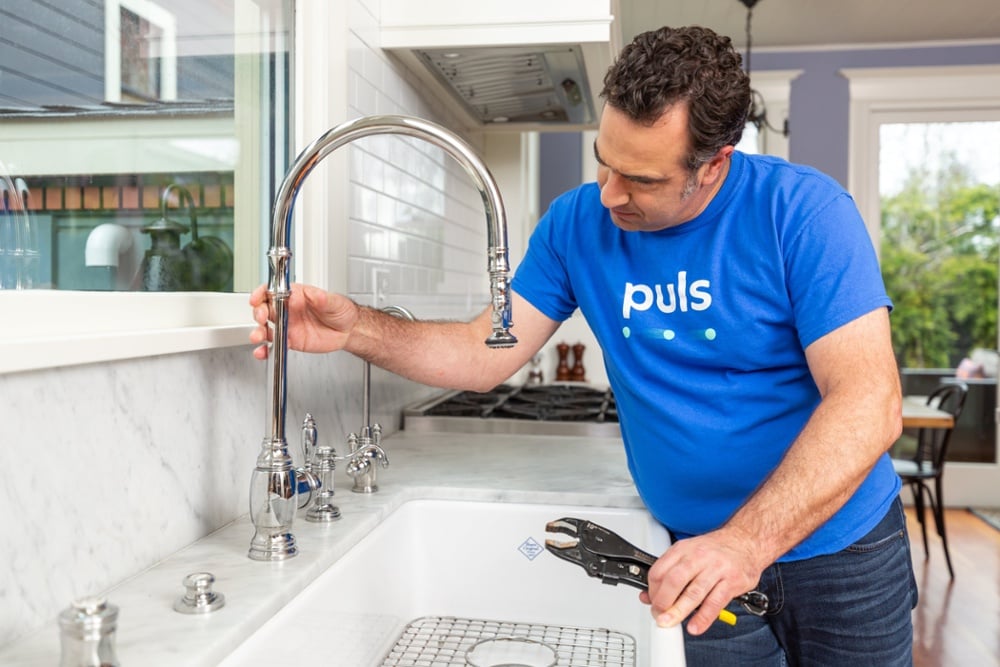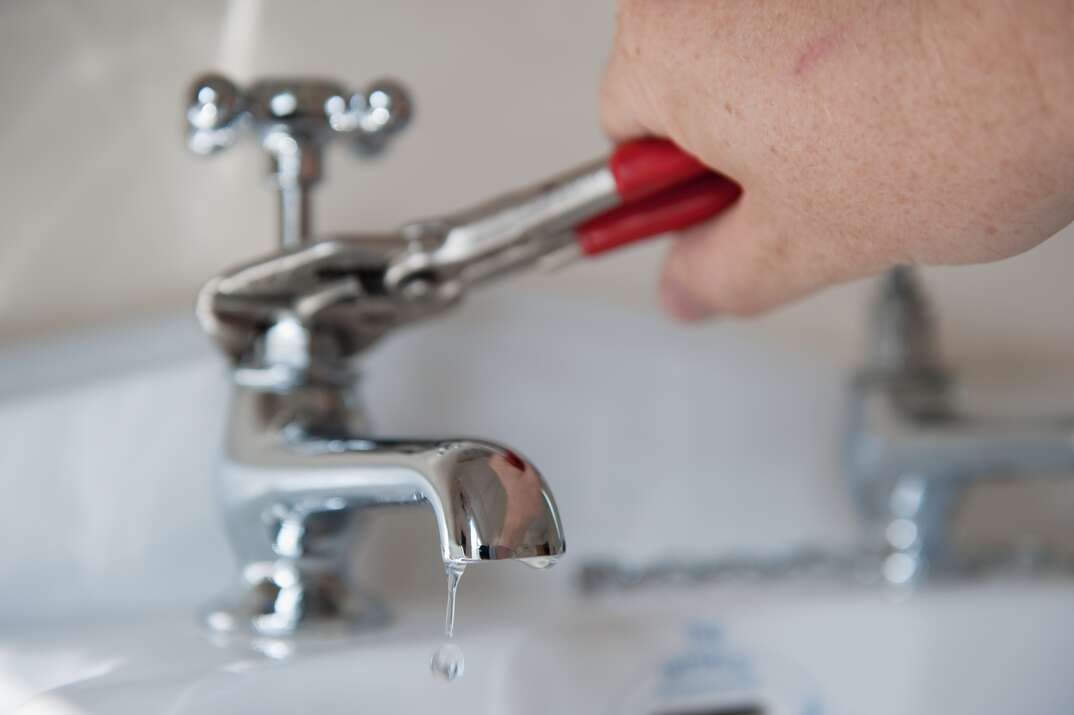Identifying As Well As Repairing Plumbing Noises In Your House
Identifying As Well As Repairing Plumbing Noises In Your House
Blog Article
This article which follows about Why Your Water Pipes Are Noisy and How To Shut Them Up is indeed engaging. Check it out yourself and decide what you think about it.

To identify noisy plumbing, it is important to establish very first whether the unwanted sounds take place on the system's inlet side-in various other words, when water is transformed on-or on the drain side. Noises on the inlet side have differed reasons: extreme water pressure, used shutoff as well as faucet parts, poorly linked pumps or other home appliances, incorrectly positioned pipeline fasteners, and plumbing runs having a lot of tight bends or various other limitations. Noises on the drainpipe side typically originate from bad location or, as with some inlet side noise, a layout having tight bends.
Hissing
Hissing noise that happens when a faucet is opened a little normally signals too much water stress. Consult your local public utility if you think this problem; it will certainly be able to inform you the water pressure in your location as well as can mount a pressurereducing valve on the inbound supply of water pipeline if needed.
Thudding
Thudding noise, commonly accompanied by shuddering pipelines, when a faucet or device valve is shut off is a problem called water hammer. The sound as well as vibration are triggered by the resounding wave of pressure in the water, which instantly has no location to go. Sometimes opening a shutoff that discharges water rapidly right into a section of piping having a restriction, arm joint, or tee fitting can create the same condition.
Water hammer can generally be cured by mounting fittings called air chambers or shock absorbers in the plumbing to which the problem valves or taps are connected. These gadgets permit the shock wave created by the halted circulation of water to dissipate airborne they include, which (unlike water) is compressible.
Older plumbing systems might have short vertical sections of capped pipeline behind wall surfaces on faucet runs for the very same purpose; these can ultimately loaded with water, reducing or ruining their performance. The cure is to drain the water system entirely by shutting down the main water system shutoff and opening all taps. After that open the main supply shutoff and shut the taps individually, beginning with the faucet nearest the valve as well as finishing with the one farthest away.
Chattering or Screeching
Intense chattering or shrilling that takes place when a shutoff or tap is activated, and that typically vanishes when the installation is opened totally, signals loosened or defective internal parts. The option is to replace the valve or tap with a brand-new one.
Pumps and also devices such as washing machines and dishwashing machines can move electric motor sound to pipelines if they are incorrectly attached. Connect such things to plumbing with plastic or rubber hoses-never inflexible pipe-to isolate them.
Various Other Inlet Side Noises
Creaking, squeaking, scratching, snapping, and tapping typically are brought on by the expansion or contraction of pipes, generally copper ones supplying hot water. The sounds occur as the pipes slide against loose fasteners or strike nearby home framework. You can commonly identify the place of the issue if the pipelines are subjected; just comply with the noise when the pipes are making noise. Most likely you will certainly find a loosened pipe hanger or an area where pipes lie so near flooring joists or various other mounting pieces that they clatter versus them. Affixing foam pipeline insulation around the pipelines at the point of get in touch with ought to fix the problem. Be sure bands and also wall mounts are safe as well as offer adequate support. Where feasible, pipeline bolts ought to be attached to massive architectural elements such as foundation wall surfaces as opposed to to framing; doing so decreases the transmission of resonances from plumbing to surfaces that can enhance and move them. If connecting fasteners to framing is inescapable, cover pipes with insulation or various other durable material where they speak to bolts, and sandwich completions of brand-new fasteners between rubber washing machines when installing them.
Correcting plumbing runs that deal with flow-restricting tight or countless bends is a last hope that ought to be undertaken just after seeking advice from a competent plumbing contractor. However, this circumstance is fairly usual in older houses that might not have been constructed with indoor plumbing or that have actually seen a number of remodels, especially by novices.
Drainpipe Sound
On the drain side of plumbing, the principal goals are to remove surface areas that can be struck by falling or hurrying water as well as to insulate pipelines to contain inevitable sounds.
In brand-new construction, bath tubs, shower stalls, toilets, and also wallmounted sinks and also basins need to be set on or against resistant underlayments to decrease the transmission of audio through them. Water-saving commodes and taps are less noisy than standard versions; install them as opposed to older types even if codes in your location still permit utilizing older components.
Drainpipes that do not run up and down to the basement or that branch right into straight pipe runs supported at flooring joists or various other framing existing particularly bothersome noise issues. Such pipelines are large enough to emit considerable vibration; they likewise lug significant amounts of water, that makes the scenario worse. In new building, define cast-iron dirt pipelines (the large pipelines that drain pipes toilets) if you can afford them. Their massiveness consists of much of the noise made by water travelling through them. Also, avoid directing drains in walls shown to bedrooms and also areas where people gather. Wall surfaces having drainpipes ought to be soundproofed as was defined previously, making use of double panels of sound-insulating fiberboard as well as wallboard. Pipelines themselves can be covered with special fiberglass insulation made for the function; such pipes have an invulnerable plastic skin (sometimes including lead). Results are not always satisfying.
WHY IS MY PLUMBING MAKING SO MUCH NOISE?
This noise indeed sounds like someone is banging a hammer against your pipes! It happens when a faucet is opened, allowed to run for a bit, then quickly shut — causing the rushing water to slam against the shut-off valve.
To remedy this, you’ll need to check and refill your air chamber. Air chambers are filled with — you guessed it — air and help absorb the shock of moving water (that comes to a sudden stop). Over time, these chambers can fill with water, making them less effective.
You’ll want to turn off your home’s water supply, then open ALL faucets (from the bathroom sink to outdoor hose bib) to drain your pipes. Then, turn the water back on and hopefully the noise stops! If you’re still hearing the sound, give us a call to examine further.
Whistles
Whistling sounds can be frustrating, as sometimes the source isn’t easily identified. However, if you can pinpoint which faucet or valve that may be the cause, you’ll likely encounter a worn gasket or washer — an easy fix if you replace the worn parts!Whistling sounds from elsewhere can mean a number of things — from high water pressure to mineral deposits. Your best plan of attack here is to give our plumbing experts a call. We’ll be able to determine where the noise is coming from and what the cause may be, then recommend an effective fix!
Cracks or Ticks
Cracking or ticking typically comes from hot water going through cold, copper pipes. This causes the copper to expand resulting in a cracking or ticking sound. Once the pipes stop expanding, the noise should stop as well.
Pro tip: you may want to lower the temperature of your water heater to see if that helps lessen the sound, or wrapping the pipe in insulation can also help muffle the noise.
Bangs
Bangs typically come from water pressure that’s too high. To test for high water pressure, get a pressure gauge and attach it to your faucet. Water pressure should be no higher than 80 psi (pounds per square inch) and also no lower than 40 psi. If you find a number greater than 80 psi, then you’ve found your problem!
Next step is to give us a call in order to install a pressure regulator. Trust us, you don’t want to wait to resolve this issue. Not only is the sound annoying, but high water pressure can be destructive to your home — including damaging certain appliances, like your washer and dishwasher.
Dripping
You might be accustom to the slow quiet drip your kitchen faucet makes. You might have even tuned out your bathroom sink dripping and drabbing all day long — but it’s time to find its cause.
A slow drip could signify a variety of easy to fix issues, such as a worn out O ring, or loose part. And by ignoring the drip, you could be wasting up to 2,000 gallons of water a year! So start conserving water — get it looked at ASAP.
https://www.pwessig.com/blog/2018/december/why-is-my-plumbing-making-so-much-noise-/

I came across that piece of writing on Why Do My Plumbing Pipes Make A Knocking Noise when perusing the search engines. For those who liked our blog posting plz be sure to share it. Thanks so much for going through it.
Book Your Installation Report this page